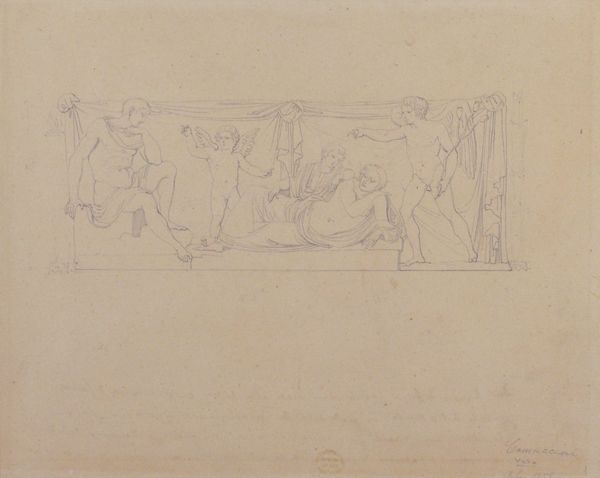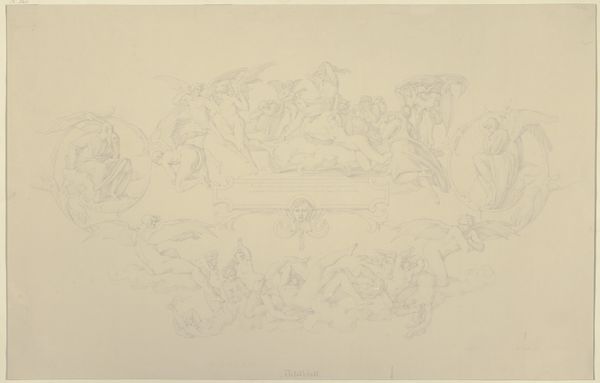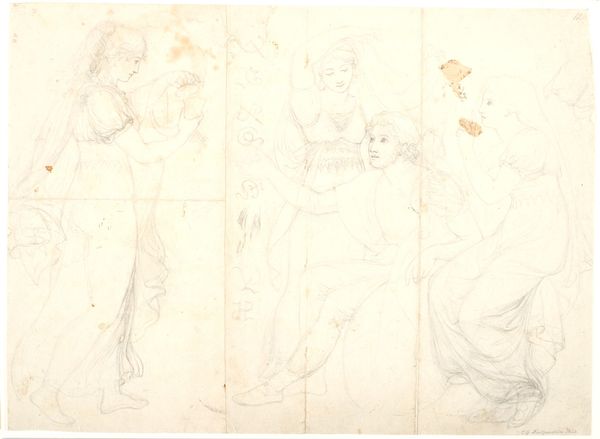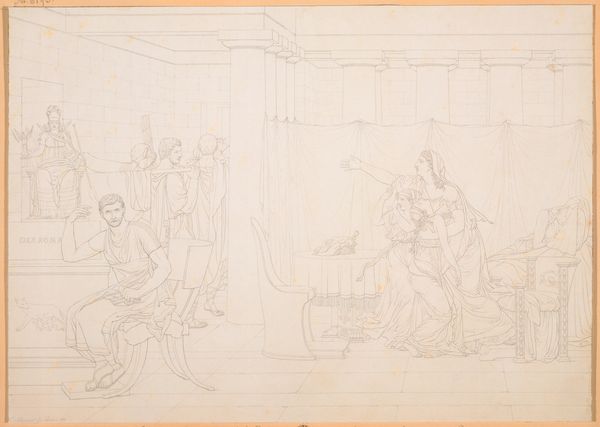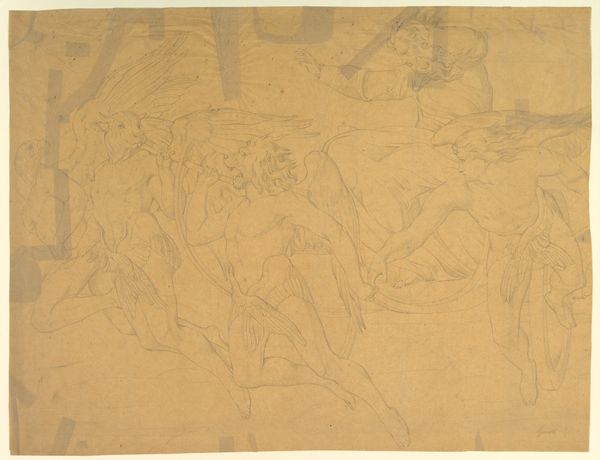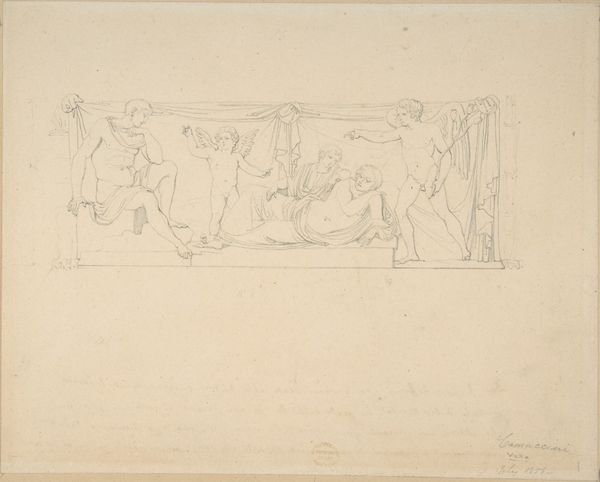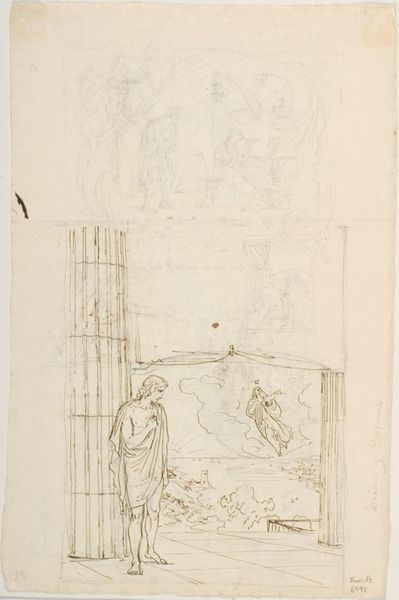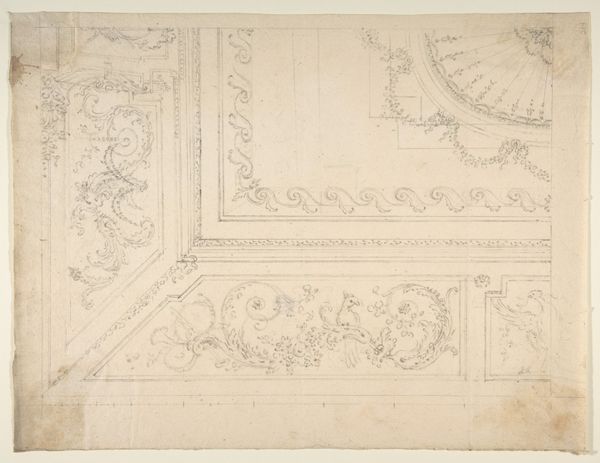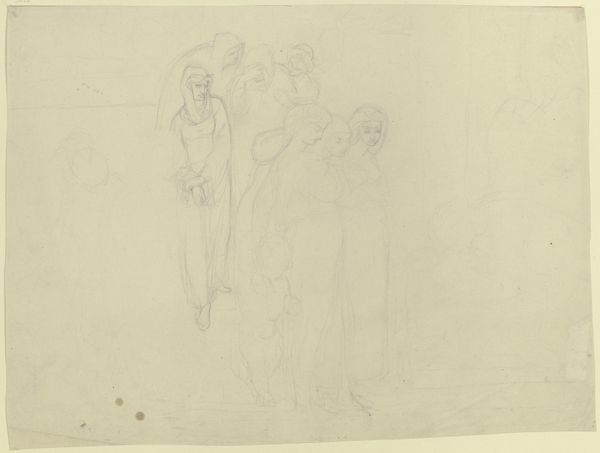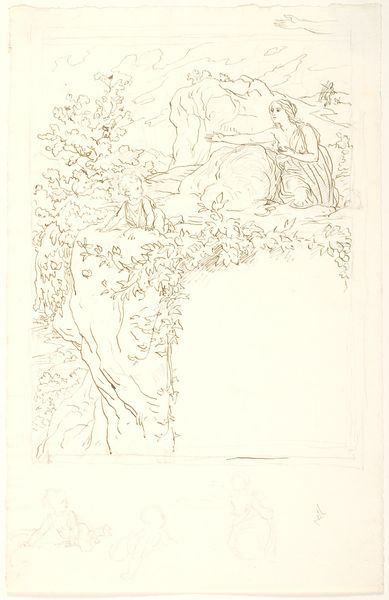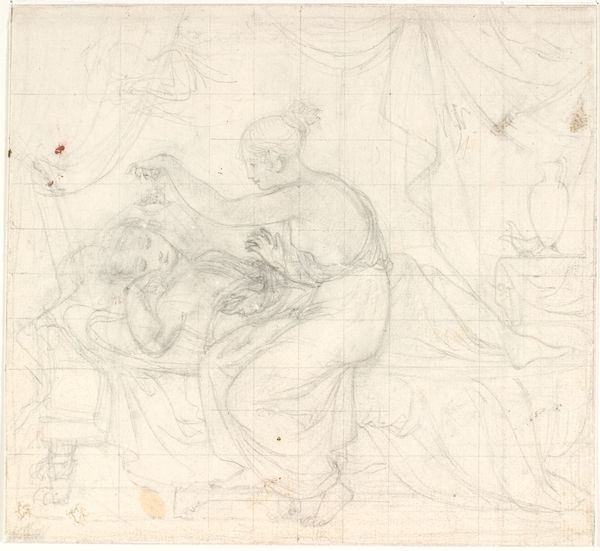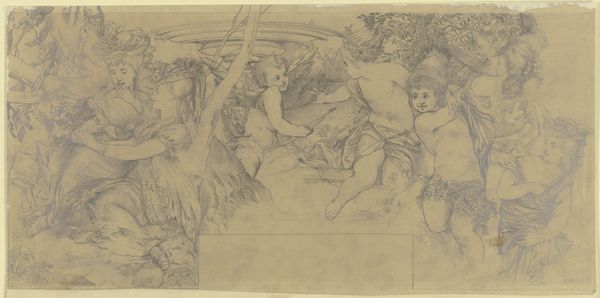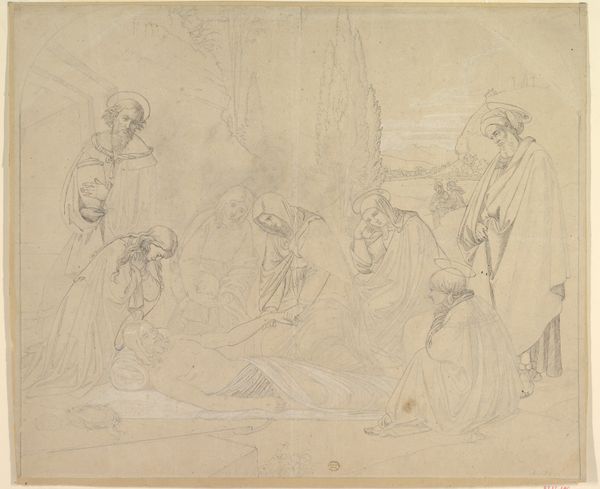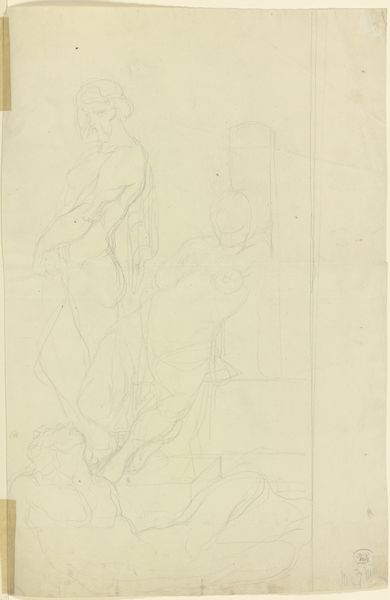
Copyright: Public Domain
Editor: Here we have Eugen Eduard Schäffer's drawing "Tizians „Himmlische und irdische Liebe“", created around 1852-1853. It's a pencil drawing, currently residing in the Städel Museum. I'm immediately struck by the preliminary nature of this piece. The lines are so delicate. What catches your eye? Curator: The very act of drawing, of outlining form and space, dictates our reading. Schäffer's choice of pencil, its grayscale potential, inherently abstracts from the original color and texture of Titian’s work. Notice how the landscape, though present, is subordinated to the figures. Editor: So the medium shapes the message, almost more than the figures themselves? Curator: In a way, yes. The medium *is* part of the message. The composition relies on contrasts—between the clothed and unclothed figures, for instance. Does this contrast generate any further interpretive avenues? Editor: It does make me consider themes of ideal versus real, perhaps? One is adorned, the other bare. I wonder, in taking away the color, does Schäffer force us to confront these oppositions more directly, reducing the figures to their essential forms? Curator: Precisely. Stripped bare of Titian's lush colorism, we’re left with line, form, and composition to contemplate. And that’s where the essence of Schäffer’s interpretation resides. Editor: This focus on pure form provides an interesting viewpoint, especially thinking about the themes of earthly versus heavenly love. It’s like stripping away the superficial to get to the core. Thanks! Curator: An incisive observation. Thank you.
Comments
No comments
Be the first to comment and join the conversation on the ultimate creative platform.
